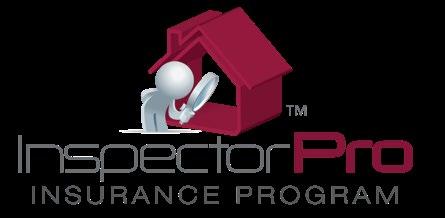
8 minute read
MANAGING RISK Lead Testing in Home Inspections
by ASHI
By Aubri Devashrayee, Content Marketing Coordinator, InspectorPro Insurance
Aubri Devashrayee is the Content Marketing Coordinator for InspectorPro Insurance, which offers ASHI members exclusive benefits through its program InspectorPro with the ASHI Advantage. Through risk management articles in the ASHI Reporter and on the InspectorPro website, InspectorPro helps inspectors protect their livelihood and avoid unnecessary risk. Get peace of mind and better protection with InspectorPro’s pre-claims assistance and straightforward coverage. Learn more at www.inspectorproinsurance.com/ashi-advantage. During the past decade, there has been increased awareness about the dangers of lead-based paint in homes built before 1978. According to The Mayo Clinic, there is no safe blood level for lead. In other words, any trace of lead in the blood is categorized as unsafe. And, the population most at risk is children from ages one to six. With this awareness of the relationship between lead exposure and health risks, many home inspectors have chosen to offer lead testing as an additional service.
Advertisement

WHY INSPECTORS TEST FOR LEAD
When asked why they offer lead testing, the home inspectors we asked said that they began offering the service for one or more of the following reasons:
1. THEY WANTED TO PROTECT CLIENTS FROM POTENTIAL
HEALTH RISKS.
According to the Mayo Clinic, the first step that must be taken in preventing lead poisoning is removing “the source of the contamination” and taking steps to reduce its ill effects if it can’t be completely removed. The U.S. Environmental Protection Agency (EPA) says that finding and mitigating lead contamination can help avoid health issues associated with lead poisoning, including learning disabilities, slowed growth, hearing problems, anemia and, in rare cases, seizures, coma and death. That’s where home inspectors come in. By determining if lead is present in a property and where lead is located, home inspectors help keep homeowners safe.

Note: The Managing Risk column with InspectorPro Insurance provides home inspectors with tips to protect their businesses against insurance claims and examines best practices for crafting effective pre-inspection agreements.
The opinions expressed in this article are those of the author only and do not necessarily reflect the opinions or views of ASHI. The information contained in the article is general and readers should always independently verify for accuracy, completeness and reliability.
POTENTIAL LEAD RISK.
Properties that were built before 1978 are more likely to have lead-based paint and dust. Therefore, cities, complexes and subdivisions that are older tend to have more demand and need for lead testing. “If somebody wants to go [into the] business [of testing lead], they have to do it in old places with old buildings,” said Guillermo Velez, a lead inspector in New York. But how can home inspectors determine whether their region is at risk? You can see if your state has a high percentage of housing with potential lead contamination on the United Health Foundation’s map of national housing with lead risk. However, keep in mind that the overall housing in your state may not be representative of the housing with lead risk in the area you inspect. When Matthew Beatty from Beatty Home Inspection began offering lead testing, he was surprised to find a lack of demand in his region. “I do a lot of newly constructed homes and homes that have been renovated,” Beatty said. Because of the lack of interest in his area, Beatty decided to stop offering lead testing. Beatty and Velez are both in New York, the state with the highest percentage of potential lead risk, but the regions and buildings they inspect are very different. Beatty primarily inspects houses in a growing area with new builds. Conversely, Velez primarily inspects old apartment complexes in the heart of New York City.
INVESTING IN LEAD TESTING

EDUCATION
If you would like to offer lead testing with your home inspections or as an additional service, you must get the appropriate certification, no matter in which state you inspect. To get certified, you must take an approved lead inspection course and pass the test administered. Keep in mind that earning this certification can be expensive. In fact, certification is often the most expensive aspect of offering lead testing. “The number one [investment] was just [becoming] educated,” Beatty said.
THE EPA ADMINISTERS LEAD INSPECTION COURSES AND TESTS IN THE FOLLOWING STATES:
• Alaska • Arizona • Florida • Idaho • Montana • Nevada • New Mexico • New York • South Carolina • South Dakota • Wyoming If you are not in one of the states listed above, your state government has EPA-authorized lead-based paint programs. To see which courses are approved in your state, you can visit the EPA’s Lead-Based Paint Abatement and Evaluation Program Overview. In our research, we found that, although it varies by state, the cost of certification courses ranges from $150 to $575, with renewal courses costing approximately $150.
BEATTY SAID.
EQUIPMENT
Although there are many lead testing kits from which to choose, not all of them are EPA approved. In fact, there are only three lead testing kits that the EPA recognizes: •3M™ LeadCheck™ Swabs •D-Lead® •State of Massachusetts lead test kit The pricing for these tests ranges from $26 to $141. Cost depends on the brand, how many tests come in a package and the retailer from which you buy them. In addition to the tests themselves, you will need personal protective equipment (PPE). The Occupational Safety and Health Administration (OSHA) advises the following gear for those working with or around lead: • Respirators • Gloves • Shoe covers • Coveralls When dealing with lead hazards, OSHA also recommends wearing goggles or a face shield. However, these PPEs are not as important to your safety as the equipment listed above.
ENDORSEMENTS
An endorsement is a form that either modifies or adds coverage to your insurance policy. Most home inspection insurance policies exclude additional services like lead testing. Thus, the insurance company will not provide coverage for those additional services without an endorsement. So, if you perform lead testing or want defense and indemnity for claims involving lead testing, you have to add coverage to your policy with an endorsement. Typically, insurers charge a flat, annual fee around $50 for a lead endorsement. However, some insurance policies offered by other providers may give you lead coverage outright with a sublimit. Sublimits cap certain risks, usually additional services, defined in your insurance policy, which gives you less coverage per individual service. For example, a home inspector who purchases $1,000,000/$1,000,000 in coverage with a $100,000 sublimit receives only $100,000 per claim and per policy period for lead-related allegations. So, when choosing your coverage, you must be sure to take sublimits into account.
VELEZ SAID.

EDUCATION
Steger recommends inspectors begin their education knowing their state’s specific stipulations. “The first thing is to find out whether the state that the inspector’s in has any special requirements,” Steger said. “Pennsylvania, for example, requires that anybody who does testing or remediation be licensed in PA by the Department of Environmental Protection.” Although South Dakota doesn’t have any certification requirements, Steve Green of Total Home Inspection, LLC, took a radon measurement class and the National Radon Safety Board’s (NRSB) certification exam. According to Green, this helps him provide better service and stand out from competition.
Carrying a lead endorsement is one of the most important things you can do to protect against lead-related claims. However, there are additional risk management techniques you can employ to safeguard your business. Here are some suggestions:
MAKE SURE CLIENTS ARE NOT PRESENT FOR THE LEAD INSPECTION.
While having clients attend inspections can help mitigate risk during some inspections, it is the exact opposite with lead inspections. To keep your clients safe and to avoid possible claims concerning lead exposure, request that your clients not attend your lead inspections—even if they are willing to wear the necessary safety equipment.
CHANGE YOUR PPE BETWEEN LEAD INSPECTIONS.
For your own safety, it’s imperative that you wear appropriate PPE during lead testing. However, if you neglect to change safety gear in between inspections, you could be spreading lead contamination. “Because I don't want to get any lead outside the apartment inside, and inside the apartment outside, [I always change safety gear],” Velez said. Even during an inspection of the same property, you can possibly spread lead contamination from one area to another. Velez has a solution: “I make sure, from sample to sample, I change my gloves. Because if one windowsill is contaminated and I don't change my gloves, and the next window is clean, the clean window will probably come back positive [for lead],” Velez said.
HELP CLIENTS WITH PROPERTIES WITH HIGH LEAD LEVELS TAKE APPROPRIATE NEXT STEPS.
Lead inspectors are not lead abatement professionals. While some inspectors get certified for both, it is a conflict of interest to be the abatement professional for property you inspected. That’s why it’s important to have abatement referrals you trust to give to clients. If you are referring your client to any other inspector or contractor, it is highly recommended that you request that that referral add you as an additional insured to their insurance policy. This ensures that, if you are named in a claim regarding their lead abatement services, their insurance coverage will defend you.
LEAD TESTING AND YOUR HOME INSPECTIONS
Does your region have a high percentage of housing with potential lead risk? Do you feel that you have a duty to your clients to protect them from lead poisoning? Do you inspect a lot of homes built before 1978? If you answered “yes” to any of these questions, you may want to consider offering lead testing.






